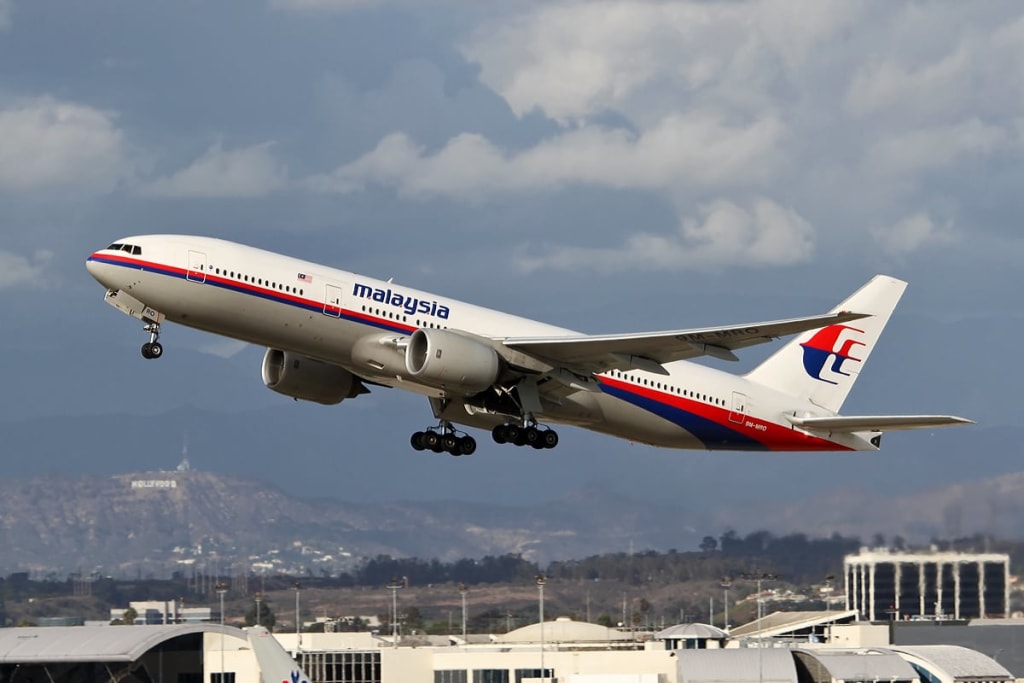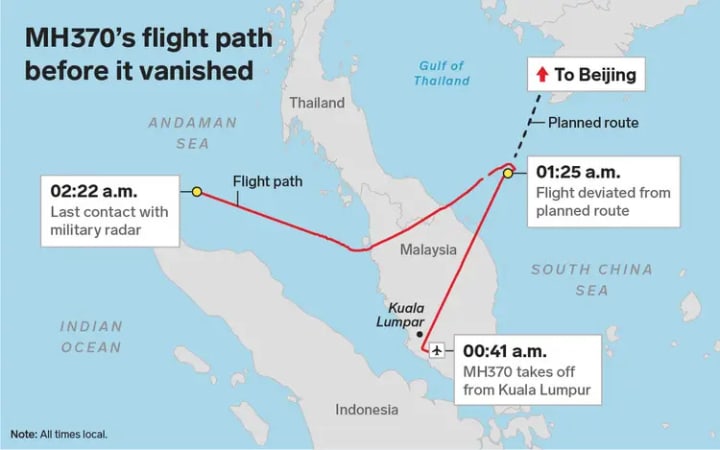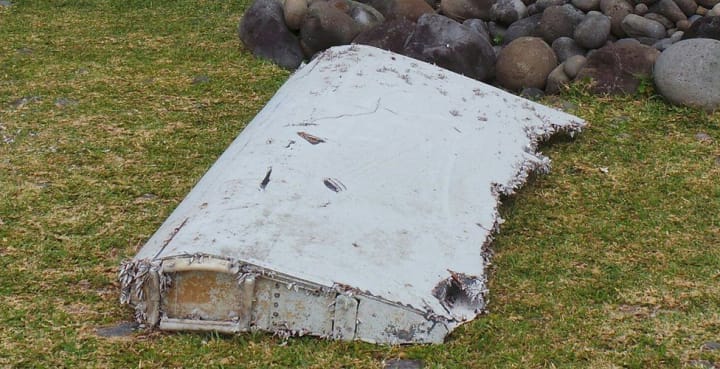"MH370"- The lost plane
The Plane that disappeared

One of the greatest aviation mysteries in modern history is the disappearance of Malaysia Airlines Flight MH370 on March 8, 2014. Less than an hour after takeoff, the aeroplane carrying 239 passengers from Kuala Lumpur to Beijing disappeared from radar. The wreckage and the reason for the crash have never been recovered in spite of an extensive worldwide search effort, leaving the families of those on board with many unanswered questions and unsolved pain.
Flight and its events
Malaysia Airlines Flight 370 (MH370/MAS370) was an international passenger flight operated by Malaysia Airlines that disappeared on 8 March 2014 while ready to travel from Kuala Lumpur International Airport in Malaysia to Beijing Capital International Airport. With all the 227 passengers and 12 crew members,the plane disappeared from Air traffic controllers radar screen around 38 minutes after takeoff.While it was over the South China Sea, it continued to deviate westward from its planned flight path, crossing the Malay Peninsula and the Andaman Sea for another hour.It lost radar range in northwest Peninsular Malaysia, 200 nautical miles (370 km; 230 mi) from Penang Island.

Possible causes of disappearance
Theories about what happened to aircraft 370 in the weeks after it disappeared covered everything from technical failure to pilot suicide. Although continuous rumours of a hijacking emerged as a result of the loss of the ACARS(Aircraft Communication Addressing and Reporting System) and radar signals, no one or organisation took responsibility. It also appeared doubtful that hijackers would have flown the aircraft to the southern Indian Ocean. No suspicious activity was discovered in the behaviour of the captain, first officer, or cabin crew prior to the flight, but the possibility that the signals had been turned off from inside the aircraft suggested that one of the crew members had committed suicide—a possibility that Malaysian authorities have not yet ruled out. Some people believed that flight 370 was shot down once the debris was found, however there was no proof of missile explosion.
Discovery - "the first clue"
The right flaperon (a trailing edge control surface) was the first piece of wreckage to be identified to belong to Flight 370. In July 2015, I t was located around 4,000 km (2,200 nmi; 2,500 mi) west of the underwater search area, on a beach near Saint-André, Réunion, an island in the western Indian Ocean. The object was shipped from the French overseas territory of Réunion to Toulouse, where it was investigated by France's civil aviation accident investigation agency. Malaysia sent its own investigators to Toulouse and Réunion. On September 3, 2015, French officials declared that serial numbers discovered on interior flaperon components "certainly" connected the flaperon to Flight 370. A borescope was used to retrieve these serial numbers.

By October 2017, 20 fragments of debris thought to be from 9M-MRO had been found on beaches in the western Indian Ocean.18 of the fragments were "assessed as probably coming from the accident aircraft", while the other two were "identified as being very likely or almost certain to originate from MH370". The ATSB released two reports on 16 August 2017: a drift study of the recovered objects by the CSIRO, which identified the crash area "with unprecedented precision and certainty" at northeast of the primary 120,000 km2 (46,000 sq mi) underwater search zone; and the analysis of satellite imagery collected on 23 March 2014, two weeks after MH370 disappeared.
Search Operations
The search for the missing airplane became the most expensive search in the history of aviation. The search for the missing aircraft quickly rose to the top of the list of aviation expenses. After initially concentrating on the South China Sea and the Andaman Sea, analysis of automatic communications between the aircraft and an Inmarsat satellite pointed to a major crash location in the southern Indian Ocean.After a three-year search across 120,000 km2 (46,000 sq mi) of ocean,the Joint Agency Coordination Centre in charge of the mission stopped its operations in January 2017 failing to find the aircraft.Ocean Infinity, a private company, started a second search in January 2018, but it was unsuccessful after six months as well.
Conclusion
The MH370 disaster still hangs over the aviation sector and serves as a strong reminder of the value of safety and security when flying. Since then, the International Civil Aviation Organization (ICAO) has advocated for commercial aircraft to be tracked in real time at all times, and airlines and aviation authorities have improved communication and coordination in the event of an emergency.For the MH370 victims' families, the tragedy is still a painful and unfinished part of their life. The search may be finished, but the incident's mystery and unanswered questions will be debated and discussed for years to come.






Comments
There are no comments for this story
Be the first to respond and start the conversation.